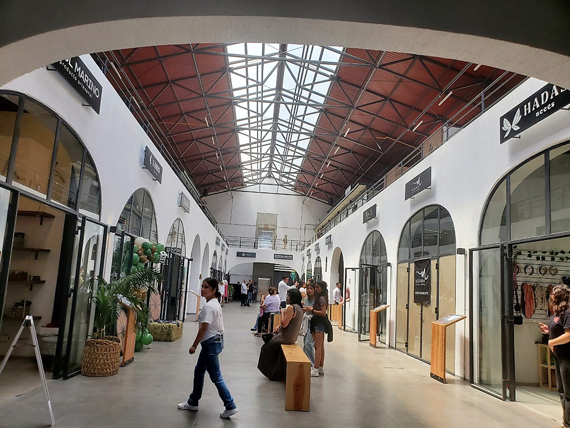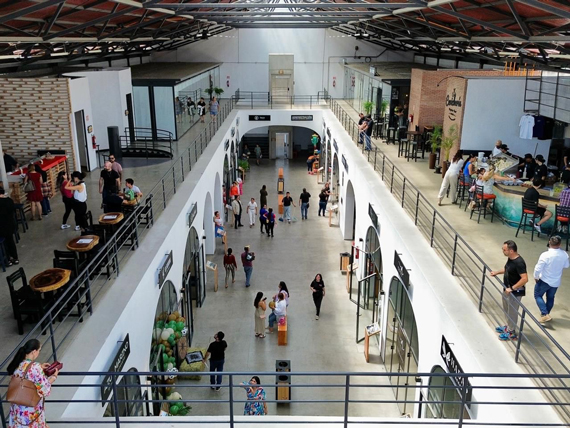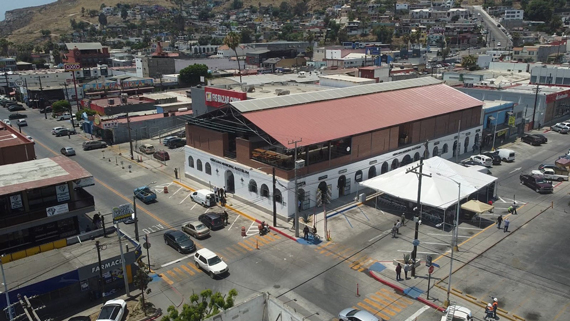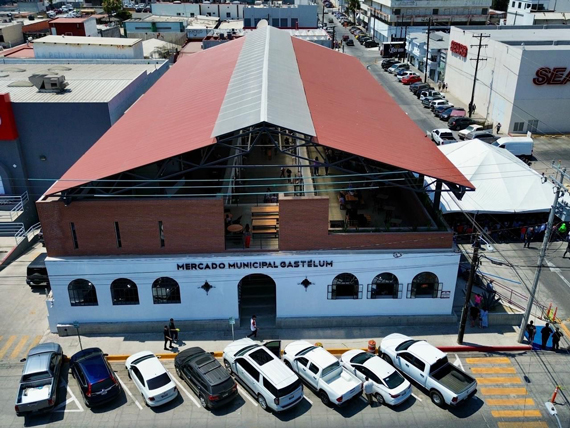|
Ensenada Historic Market’s Modernization Serves New & Traditional Tastes
By Maria E Curry
September/October 2024
One of the lessons I have learned from preservationist Donovan Rypkema, the founder of PlaceEconomics, and my own experience is that old buildings survive when they are economically viable. This is the case for the old municipal public market in Ensenada. Abandoned for decades, it was recently saved from demolition, thanks to a reconstruction and adaptive reuse project.
The site where the old market stands holds a varied and elaborate history. In 1824, Francisco Gastélum built Ensenada’s first house there. The newly resurrected complex of shops and other attractions is named Gastélum Municipal Market.
In 1853, Tennessee native and a leading military adventurer William Walker turned the house into a fort when he led an attack on Ensenada in a failed attempt to gain control over Baja California. In 1907, the building was replaced with the first municipal palace, which stood for nearly 40 years until fire destroyed it in 1945. Finally, the market was built in 1947.
Several years ago, Ensenada Mayor Armando Ayala secured 28 million pesos, or more than 1.4 million US dollars in federal funds from an urban improvement program to reconstruct and adapt the old market for new uses. Prominent Mexico City architect Felipe Leal designed the innovative project, enlarging the building by adding a second story.
The original single-story structure features Spanish Colonial style arched windows and doors, and an interior patio. Leal preserved those character-defining features, and differentiated the new second-story from the first with brick walls and a metal roof. He subdivided the original interior to accommodate 33 stores; five eateries, and outlets for local seafood, gourmet products, and beverages. For community use, the re-envisioned market also offers a digital library; an area for cultural activities, and offices.
"Now this market is an ideal place to boost tourism, reactivate the economy, generate new jobs, and promote merchants, artisans, and other local talent," Ayala said. Federal, state, and municipal officials joined the mayor at Gastélum Municipal Market’s grand opening on July 24, 2024.
Some cultural groups, including Patronato del Centro Histórico Turístico y Cultural de Ensenada, would have preferred a different approach. They aimed for restoration instead of adaptive reuse, and historians proposed keeping the city’s historic archive on the first floor. (The archive will likely move to the 1930s Riviera Cultural Center, according to some historians.)
However, the government did not allow for many changes to the project. State officials mediated, proposing mitigation measures that included preserving the market’s main character-defining features and designating the site for its cultural heritage.
Mexico and Baja California do not have an effective environmental review process requiring federal agencies to consider the effects on historic properties of projects they undertake, assist, fund, permit, license, or approve. By contrast, in the U.S., Section 106 of the National Historic Preservation Act is an important tool for citizens and government agencies to protect historic properties. Adding a similar provision to federal and Baja state law could significantly strengthen historic preservation while helping improve community participation and dialogue.
BACK to the table of contents
|
2025
2024
2023
2022
2021
2020
2019
2018
2017
2016
2015
|







